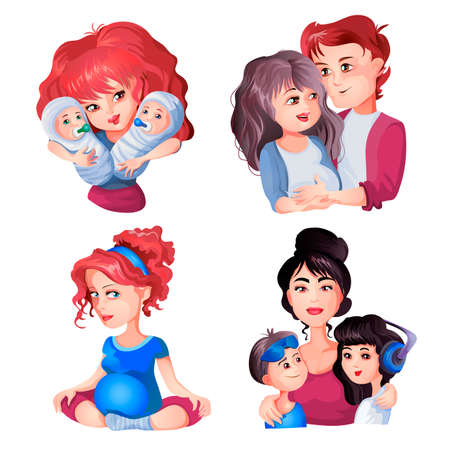Introduction to Baby Sign Language
Baby sign language is a unique and growing approach that allows infants and toddlers to communicate their needs and feelings before they are able to speak. Rooted in the concept that babies understand language and can control their hand movements long before they develop verbal skills, baby sign language uses simple gestures—often derived from American Sign Language (ASL)—to bridge the communication gap during early childhood. The practice first gained popularity in the United States in the late 20th century, thanks to pioneering research that highlighted its developmental benefits. Today, many American families embrace baby sign language as a practical tool for enhancing early communication and reducing frustration for both parents and children. In homes across the country, caregivers use signs for common words like “more,” “milk,” and “all done” to help children express themselves effectively, fostering a nurturing environment where emotional connections flourish even before spoken words emerge.
Early Communication and Emotional Connection
One of the most remarkable benefits of baby sign language is its ability to bridge the communication gap between parents and their infants before spoken language emerges. Babies typically begin developing verbal skills around 12 months, but their desire to communicate starts much earlier. Through simple signs, parents can empower their little ones to express needs, feelings, and thoughts as early as six months old. This early form of interaction goes beyond basic requests for food or comfort—it lays a foundation for emotional security, fostering a sense of being understood and valued. When parents consistently respond to their babys signs, trust builds naturally, helping infants feel safe and connected. The table below highlights how baby sign language supports both early communication and emotional bonding:
| Aspect | With Baby Sign Language | Without Baby Sign Language |
|---|---|---|
| Communication | Babies can share needs and emotions clearly before speaking | Babies may rely on crying or guesswork, leading to frustration |
| Parent-Child Bonding | Mutual understanding fosters closeness and trust | Missed cues can create stress for both parent and child |
| Emotional Security | Consistent responses reinforce a sense of safety and confidence | Lack of clear communication may cause uncertainty or anxiety |
This early connection is especially important in American families, where busy lifestyles sometimes challenge quality parent-child time. Incorporating baby sign language into daily routines—like mealtime, bath time, or bedtime—offers meaningful opportunities for interaction that nurture attachment. By facilitating nonverbal dialogue long before words are spoken, baby sign language helps parents tune in to their child’s unique cues, making every moment together more harmonious and emotionally rich.

3. Benefits for Parent-Child Relationships
One of the most profound advantages of baby sign language is its positive impact on the parent-child relationship. By introducing signs early, parents create new opportunities to connect and communicate before their child can use spoken words. This shared “language” acts as a bridge, reducing frustration from misunderstandings and allowing even infants to express needs, feelings, or interests with clarity. As a result, parents often feel more in tune with their child’s world.
Deepening the Emotional Bond
Signing together requires focused attention, eye contact, and patience—all essential elements for bonding. These daily moments become special rituals that strengthen emotional ties. When a baby makes a sign and a parent responds warmly, the child feels seen and valued. This two-way communication supports secure attachment, laying the foundation for healthy relationships in the future.
Fostering Trust Through Communication
When babies realize their gestures are understood, their confidence grows. They begin to trust that their caregivers will notice and respond to their needs promptly. This sense of trust fosters a safe emotional environment where children can explore and learn without fear of being misunderstood or ignored.
Strengthening Early Relationships
The benefits extend beyond reduced tantrums or easier bedtime routines; signing creates joyful interactions that celebrate every small milestone. Parents who practice baby sign language often report feeling more connected and empathetic towards their children’s experiences. In turn, babies develop an early appreciation for communication and collaboration—skills that will serve them well throughout life.
4. Cultural Relevance in American Parenting
Baby sign language has gained significant traction among American families, and its popularity is closely tied to the evolving landscape of parenting in the United States. Many American parents value open communication, early childhood development, and fostering independence from a young age. These cultural priorities align well with the principles behind teaching babies sign language.
In the context of American parenting styles, there is a strong emphasis on responsive parenting—being attuned to a child’s needs and cues. Baby sign language fits naturally within this framework by providing infants with tools to express their feelings and desires before they can speak. This not only reduces frustration for both parent and child but also strengthens mutual understanding and emotional connection.
Additionally, American culture often embraces educational trends that encourage early learning and cognitive stimulation. As a result, baby sign language is seen as an innovative approach that supports both language development and social-emotional skills. It also fits with the current trend toward inclusive communication, recognizing that each child develops at their own pace and may benefit from diverse methods of interaction.
The table below highlights how baby sign language aligns with key values and trends in American parenting:
| American Parenting Value/Trend | How Baby Sign Language Supports This |
|---|---|
| Responsive Parenting | Enables two-way communication before verbal speech develops |
| Early Learning & Development | Stimulates cognitive growth and early literacy through visual/tactile engagement |
| Emphasis on Independence | Empowers babies to express needs, reducing reliance on guesswork |
| Inclusive Communication | Catered to various developmental stages and abilities, supporting all children |
| Reducing Parental Stress | Lowers misunderstandings and tantrums, leading to calmer household dynamics |
This cultural relevance has helped baby sign language become an integrated practice in many American households, childcare centers, and even pediatric recommendations. By resonating with core values such as empowerment, education, and emotional closeness, baby sign language continues to play an important role in shaping modern parent-child relationships in the United States.
5. Practical Tips for Getting Started
Introducing baby sign language into your family life can feel both exciting and a little daunting, but it’s easier than you might think. Here are some simple steps and strategies to help you get started, along with resources and community support options available throughout the U.S.
Start with Everyday Signs
Begin by choosing a handful of basic signs that fit naturally into your daily routine—common ones include “milk,” “eat,” “more,” “all done,” and “please.” Use these signs consistently whenever you say the corresponding words, so your baby associates the gesture with its meaning.
Keep It Fun and Engaging
Make learning sign language an enjoyable experience. Sing songs, read picture books, or play games that incorporate signs. Babies learn best through repetition and positive interaction, so keep sessions short and playful.
Be Patient and Consistent
Remember, every child learns at their own pace. Some babies may start signing back within weeks, while others might take a few months. Consistency is key—keep using the signs even if you don’t see immediate results. Celebrate all attempts at communication to encourage your child.
Utilize Trusted Resources
There are many resources available in the U.S. for families interested in baby sign language. Look for local classes at community centers, libraries, or hospitals. Online platforms such as BabySignLanguage.com and Signing Time offer free videos, printable charts, and helpful guides tailored for American families.
Connect with Community Support
Joining parent groups or online forums focused on baby sign language can provide encouragement, fresh ideas, and answers to your questions. Many communities have meet-ups or workshops where families practice together, share experiences, and build connections—all of which further strengthen the parent-child bond.
Take It One Step at a Time
The journey to learning sign language with your baby doesn’t have to be overwhelming. Start small, use reliable resources, reach out for support when needed, and most importantly—enjoy this special way of connecting with your child as you grow and learn together.
6. Common Myths and Concerns
When considering baby sign language, many parents encounter various myths and concerns that may give them pause. Addressing these misconceptions is essential to help families confidently embrace this valuable communication tool and enjoy its positive effects on parent-child bonding.
Myth 1: Baby Sign Language Delays Speech Development
A common worry among parents is that introducing signs will hinder their child’s ability or motivation to speak. In fact, research shows the opposite—babies who use sign language often start talking sooner and develop larger vocabularies. Signing acts as a bridge to spoken language by reinforcing word meaning and building strong communication pathways in the brain.
Myth 2: Only Certain Families Benefit from Signing
Some believe that baby sign language is only useful for children with hearing impairments or specific developmental needs. However, signing can benefit all babies and caregivers, regardless of background or ability. It supports emotional connection, reduces frustration for both parent and child, and fits easily into daily routines at home, daycare, or playgroup settings across the United States.
Concern: Learning Sign Language Is Too Complicated
Parents sometimes feel intimidated by the idea of learning a new language alongside their baby. The good news is you don’t need to master American Sign Language (ASL) to start signing with your child. Many families begin with just a few basic signs like “milk,” “more,” or “all done,” gradually adding more as they become comfortable. Resources such as books, apps, and local classes make it accessible for everyone.
Addressing Appropriateness and Benefits
Using baby sign language is developmentally appropriate for infants as young as six months old. It fosters early communication skills while helping parents tune into their child’s needs and emotions. As families share these moments of understanding, trust and attachment grow stronger—laying the foundation for healthy relationships in years to come.
Reassurance for Parents
If you’re considering baby sign language, rest assured it’s a proven method embraced by families nationwide. By dispelling myths and addressing concerns, you can approach signing with confidence, knowing you’re supporting both your child’s growth and the special bond you share.
7. Conclusion: Building Lifelong Connections
In summary, introducing baby sign language into your daily routines does more than help your child communicate before they can speak—it lays the groundwork for a deep, enduring parent-child connection. By consistently using signs, parents foster trust, emotional security, and mutual understanding from an early age. This shared language not only helps reduce frustration but also celebrates small achievements together, strengthening the emotional ties that last well beyond infancy. As children grow and develop their verbal skills, the foundation built through signing continues to support open communication and a strong family bond. Ultimately, embracing baby sign language is an investment in a loving, lifelong relationship with your child—one rooted in empathy, respect, and joy.


